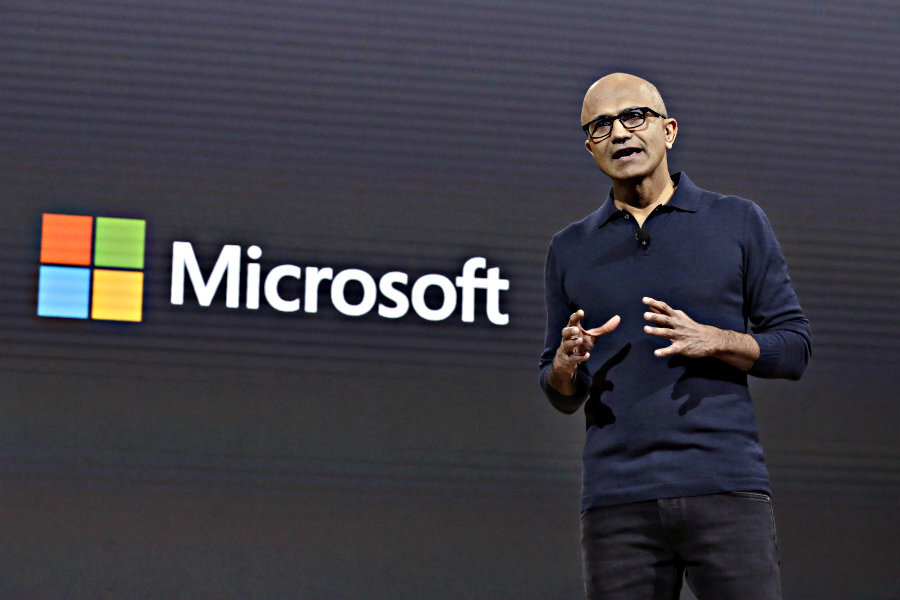Microsoft ties executive bonuses to meeting diversity goals. Will it help?
Microsoft announced plans this week to tie executive bonuses to company success at meeting diversity hiring goals, after the number of female hires fell this fall.
Silicon Valley has long been aware of its diversity problem, and a number of companies have instituted internal plans to achieve greater diversity. Nevertheless, the tech industry still suffers from a massive diversity gap, with minority groups and women making up a small fraction of new hires and corporate boards.
Is Microsoft’s ambitious executive-reward program a credible path to progress for technology companies?
Bonuses helped at Intel. In January 2015, Intel launched a $300 million diversity initiative, which included bonuses for referring diverse applicants. This February, Intel announced that 43 percent of all new hires in 2015 were women or minority applicants, marking a massive success for the strategy.
Diversity experts say that companies must remain persistent and innovative in order to attract more minorities and women to Silicon Valley.
“Diversity and inclusion is something you’ve got to ingrain, you’ve got to keep talking about the business value, you’ve got to keep talking about the impact,” Microsoft’s diversity and inclusion officer, Gwen Houston, told Bloomberg.
At the industry level, diversity numbers are dismal. Just 15.5 percent of technology company board positions are held by women, reported The Christian Science Monitor's Ellen Powell in October. She wrote:
Some of these struggles are societal: Young girls may be taught that engineering isn’t for them, or an absence of role models may make a computing career seem too far out of reach.
Other issues are institutional. A study of open-source software-development website GitHub found that women are more likely to have their work accepted than men – but only if their gender is unknown.
Microsoft’s latest effort was inspired by this year’s decrease in the size of its female workforce. Numbers fell by one percentage point, from 26.8 to 25.8 percent, after the divestment of a Nokia factory that employed a number of women.
Although the raw numbers are discouraging, however, Microsoft says that the company is also tracking positive trends. For example, the percentage of female workers in non-production sectors actually rose this year by about half a percent. And over the past year, Microsoft reports, more than a quarter of new hires were women.
“We are encouraged by the modest gains we’re seeing in female representation in technical and leadership roles, and even more significantly, by the hiring trends of the past year that resulted from our efforts to recruit top-notch female talent,” wrote Ms. Houston in a Microsoft blog post.
The tech company also saw tiny gains in diversity hiring, with African American representation at Microsoft growing from 3.5 to 3.7 percent of the company, and Hispanic/Latino representation increasing from 5.4 percent to 5.5 percent.
Nevertheless, there is still far to go, says Microsoft. Hence the company’s effort to incentivize the hiring of women and ethnic or racial minorities by linking executive bonuses to diversity hiring.
Technology companies face several obstacles in diversity efforts. The percentage of STEM degrees awarded to women has shrunk over the past several decades, from 37 percent of engineering graduating classes in the 1980s, to 19 percent today. Recruiting minority groups can also pose a problem.
Microsoft’s announcement does not occur in a vacuum, however. A number of enterprising young people have independently developed groups and tools to encourage women and minorities to pursue tech careers, including the Technovation program at Immaculate Conception Academy, which confronts the cultural barriers that often keep women away from STEM fields.
Innovation is also happening at the entrepreneurial level. In April, the Monitor’s Schuyler Velasco reported on such programs, including a firm called GapJumpers, which is dedicated to connecting qualified potential hires to companies through a blind screening process.
Groups such as Girls Who Code are also working to break down industry barriers for women of all ages.
Besides its executive compensation strategy, Microsoft’s new diversity push also involves diversity recruiting campaigns and investing in STEM programs to increase the applicant pool.






